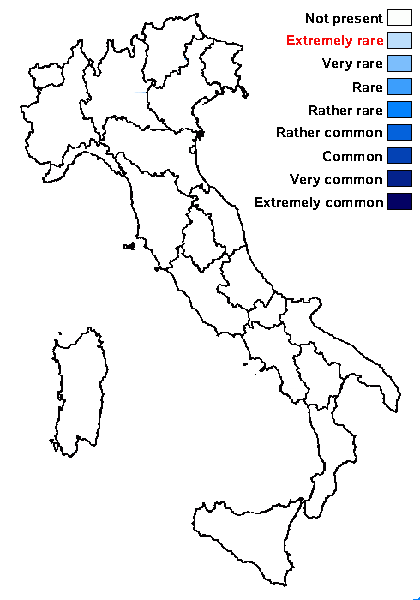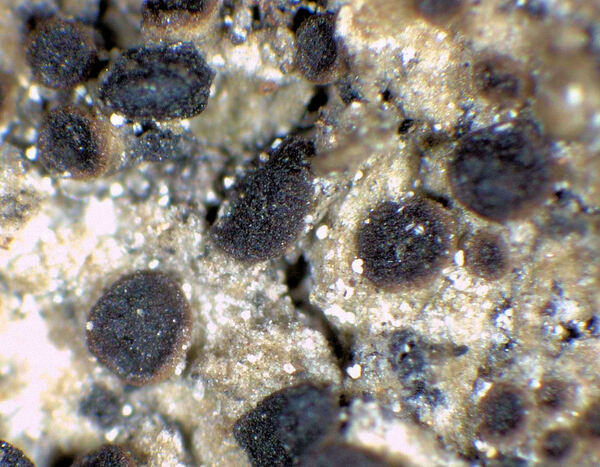Lecidea huxariensis (Beckh. ex J.Lahm) Zahlbr.
Ann. K. K. naturh. Hofmus. Wien, 13: 463, 1925. Basionym: Biatora huxariensis Beckh. ex J. Lahm - Jahresber. Westfäl. Prov.-Vereins, 13: 83, 1885 (1884)
Synonyms:
Distribution:
Description: Thallus crustose, endosubstratic, poorly evident. Apothecia lecideine, broadly adnate, 0.1-0.15(-0.2) mm across, dark brown to black, with a flat disc and an initially raised, often brownish, finally excluded proper margin. Epithecium dirty grey-green, olive-green to dark green, without crystals; hymenium colourless, 30-35 µm high; paraphyses slightly swollen at apex; hypothecium colourless. Asci (8-)12-16-spored, clavate, very thin-walled, with a K/I+ blue, tall tholus penetrated by a faintly amyloid apical cushion, the wall K/I-, surrounded by a blue outer layer, Lecanora-type. Ascospores 1-celled, hyaline, ellipsoid, 5-7(-9) x 2.5-4 µm. Photobiont chlorococcoid. Spot tests: thallus K-, C-, KC-, P-, UV-. Chemistry: unknown, probably without lichen substances.Note: a rare species of unclear relationships, growing on hard wood, e.g. on fences; reported from a few localities in the Alps (Austria, Switzerland) and in Central Europe; to be looked for in Italy.
Growth form: Crustose
Substrata: lignum
Photobiont: green algae other than Trentepohlia
Reproductive strategy: mainly sexual
Poorly known taxon in need of further study

Predictive model
Growth form: Crustose
Substrata: lignum
Photobiont: green algae other than Trentepohlia
Reproductive strategy: mainly sexual
Poorly known taxon in need of further study

Predictive model




